The First-Person Shooter
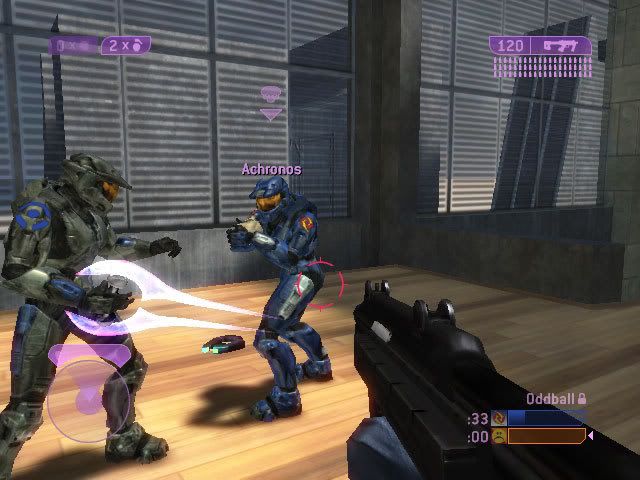
In my case study, i will explore the history of video games from the perspective of the evolution of the first-person shooter (FPS) genre of gaming tracing back to its birth in the late 1970s. This is a genre which is constantly teeming with potential, as there are frequent advances in progamming and the processing power of video-game consoles. There are many notable titles which introduced new concepts in gaming which have been emulated (literally and figuratively) by programmers around the world. The next most realistic armed combat experience, next to paintball (and other actual armed combat) is an online FPS.
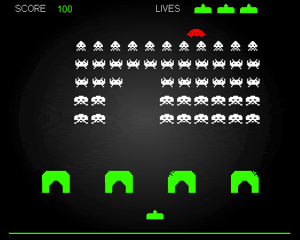
Space Invaders (1978)
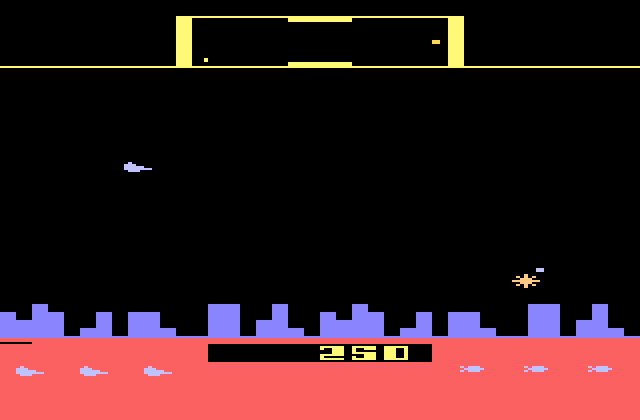
Defender (1980)
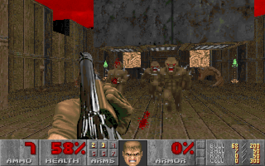
Doom II (1994)
i've been a fan of the genre since i first played doom 2 for windows 95, but the spirit of the first-person shooter has been alive since the early 1980's in arcade games like space invaders and defender, and early computer games like battlezone, star raiders, and catacomb 3D. this weblog will trace the development of the FPS genre from its roots of yesteryear to its blossoms of today over four definitive periods.

Star Raiders (1979)
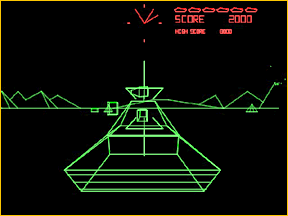
Battlezone (1980)
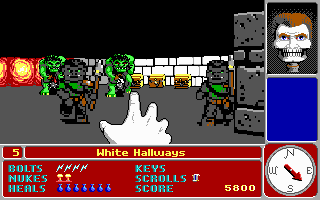
Catacomb 3D (1991)
The first period, which will be referred to as Early Games (1978-1987) consists of early arcade and Atari home video games that introduced the shooting perspective, the precursors to the modern first person shooter. These games include Space Invaders, Star Raiders, Defender, Battlezone, 3D Deathchase, 3 Demon, Driller, and MIDI Maze (Faceball 2000).
The second period, The Doom Age (1990-1995), traces the early 1990s and the games that defined the First Person Shooting genre. Computers were now powerful enough to draw three-dimensional graphics in real-time, creating mildly realistic 3D effects, giving the player more freedom and control when moving his character, and more challenging enemies. These groundbreaking games include Terminator 2: Judgement Day, Doom, Wolfenstein 3D, Doom II, (etc.).
The third period, which I'll call The Goldeneye 007 Age, represents the first growth spurt of sorts within the genre. This is when first-person shooting games became more than just "Doom clones" and many different games began to take flight on PC and Nintendo 64. Arcade shooters also became very advanced in this period.
The period with the most to write about will be the The Next Generation, which will deal with all major developments in the genre since the year 2000. This includes modern arcade shooters, hunting simulators, notable Sega Dreamcast titles (The House of the Dead), modern PC shooters (UnReal, The Call of Duty series, CounterStrike) Playstation 2 (The TimeSplitters Series, Killzone, Black) and Xbox (The Halo Series, Doom 3, Star Wars: Battlefront) titles, and some of the new games being released for the Xbox 360, Playstation 3, and Nintendo Wii.


